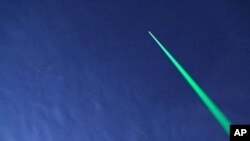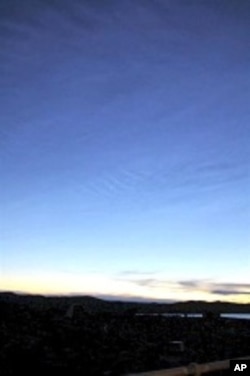Australian scientists in Antarctica will use a giant laser to measure climate change in the atmosphere. The device will gauge the temperature of clouds almost 100 kilometers above the Earth.
Researchers at the Australian Antarctic Division are testing a theory that a warming climate on Earth is linked with a phenomenon called global cooling up in the mesosphere. That is the atmospheric level that starts 50 kilometers above the planet.
The giant laser will probe what are known as luminous clouds in the mesosphere. Scientists say the brighter and colder they are, the more the Earth heats up. Man's influence on such changes is as yet not clearly understood.
Jeff Cumpston is a member of the Australian research team in the Antarctic. He says conditions within this band of cloud can help indicate how fast the planet is warming.
"Our atmospheric dynamics are such that as we've got a warming troposphere - which is where we live - as that warms that in fact is interlinked with a phenomenon called global cooling up in the mesosphere above 50 kilometers," explained Cumpston. "And so we expect that with a cooler mesosphere we'll see an increased occurrence of these clouds."
Researchers borrowed a powerful laser from Germany to probe the clouds above Antarctica. Their results will be compared with data collected in the Northern Hemisphere to create a wider picture of the Earth's climatic health.
The device shoots laser beams into the sky to measure atmospheric density, temperature and wind speed as well as tiny aerosol particles. The technology will allow the scientists to reach luminous clouds 80 and 100 kilometers above the Earth, allowing them to record precise climate details for the first time.
Antarctica is the coldest, highest and driest continent on Earth. Australia, which has territorial claims on vast areas of the Antarctic continent, maintains three research stations there.






